-
Artworks
Boleslaw Biegas Polish, 1877-1954
Burza (The Storm),
1903In collaboration with Susse Fondeur Paris34.6h x 7.8w x 5.9d inchesBronzeFurther images
-
(View a larger image of thumbnail 1
)
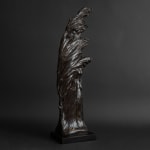
-
(View a larger image of thumbnail 2
)

-
(View a larger image of thumbnail 3
)
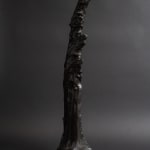
-
(View a larger image of thumbnail 4
)
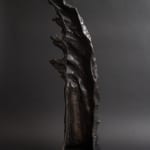
-
(View a larger image of thumbnail 5
)
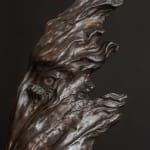
-
(View a larger image of thumbnail 6
)

-
(View a larger image of thumbnail 7
)
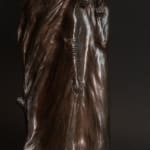
-
(View a larger image of thumbnail 8
)

-
(View a larger image of thumbnail 9
)
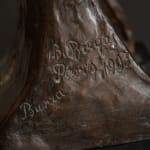
Created while at the height of his artistic career, Biegas brilliantly portrays the nature of his homeland in this powerfully expressionistic Symbolist image. Complex and profound, this sculpture can be...Created while at the height of his artistic career, Biegas brilliantly portrays the nature of his homeland in this powerfully expressionistic Symbolist image. Complex and profound, this sculpture can be read on multiple levels. Biegas captures the essence of what's sensorily tangible in order to access a deeper, emotional plane. Gale-force winds turn leafy branches into thickly sweeping diagonal forms. Human figures round their shoulders, their hands close into fists and pull in unto themselves; they cling tightly to one another for comfort and shelter. Biegas' hands have passionately molded the clay to reveal so much more than figures organically caught up in tempestuous nature of the storm. Buried within the bent tree's wood and foliage is also the heart of the Polish people's heritage whose folkloric symbolism, which predates the introduction of Christianity to the region in the 9th century and which has remained a cultural touchstone, was a wellspring for Polish national pride in their ensuing struggle for national independence.
Some of the key figures within Slavic mythology's pantheon of gods and spirits -or domovoi- is the tree spirit and the thunder god, the protector and supreme god of humanity. A common belief within this folk tradition is that the wood used to construct houses is inhabited by a tree spirit who also acts in a protective manner if a home is orderly and well-maintained. Often, the spirit is depicted as resembling the head of the household, or in the form of a cat or a dog. Utilizing a Symbolist ethos, Biegas privileges one's inner state and, in a metaphysical sense, that of the Polish people. He reveals a complex mixture of vulnerability and strength, of tenderness and steadfastness, a deep-seeded sense of survival and endurance which is simultaneously and paradoxically filled with solitude and mutual trust among people. He taps into deeply embedded cultural beliefs and harnesses these particular iconographic symbols to heroically convey a message of struggle with hope.
-
(View a larger image of thumbnail 1
)








